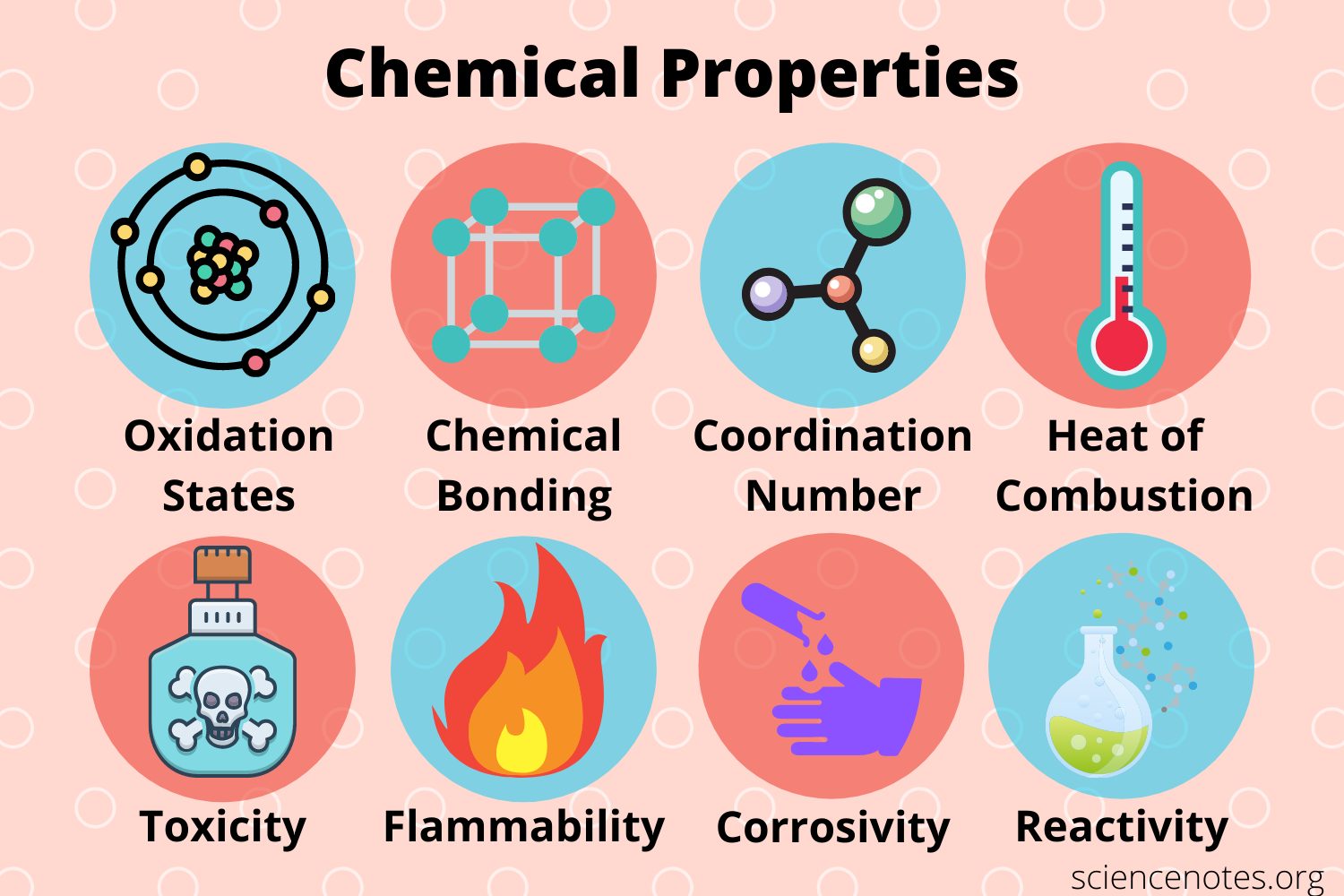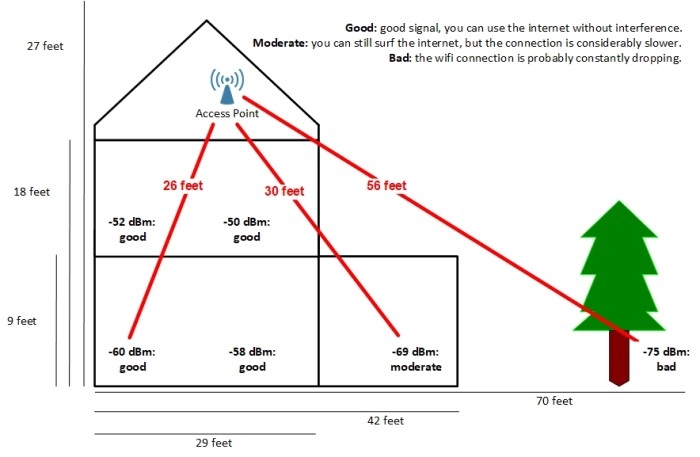What Is Property In Science?
Property is a term used in science to describe a feature or quality of a material, object, or system that can be measured or observed. It is a fundamental concept in the physical sciences, and can be applied to all areas of study. Properties can be physical, chemical, electrical, magnetic, biological, or other in nature. They can be used to characterize a material, object, or system and can be used to predict how the material, object, or system will behave under certain conditions. Properties are an important part of scientific study, as they are the basis for understanding the structure and behavior of materials, objects, and systems.
Definition of Property in Science
Property in science refers to the characteristics or attributes of a material that define its behavior, structure, or composition. Properties can be physical, chemical, optical, electrical, and magnetic. Physical properties are properties that can be observed or measured without changing the composition of the material. Examples of physical properties include mass, volume, density, color, texture, and hardness. Chemical properties are those that involve a change in the composition of the material. Examples of chemical properties include reactivity, combustibility, and flammability. Optical properties are properties that involve the interaction of light with the material, such as absorption, emission, and reflection. Electrical and magnetic properties are those that involve the interaction of an electric or magnetic field with the material, such as conductivity and magnetism. Understanding the properties of materials is essential for scientists to make informed decisions about how to use them safely and effectively.
Examples of Properties in Different Scientific Fields
Property in science is a concept that serves as a keystone of the scientific method. Properties are the essential characteristics of a given substance or object that allow us to classify and study it. Properties are often used to make predictions or draw conclusions about a substance or object. For example, the property of buoyancy can be used to predict whether an object will float in water.
The scientific field of physics is full of examples of properties. Density, mass, and electric charge are all properties of matter that are used to explain and predict the behavior of objects in the physical world. In the field of chemistry, properties such as boiling point and solubility are used to further understand and classify different substances.
In biology, properties such as metabolism, growth rate, and an organism’s ability to reproduce are all properties that can be used to categorize living things. Even in the field of psychology, properties such as intelligence, creativity, and resilience are used to analyze different aspects of human behavior and performance.
These are just a few examples of how properties are used in different scientific fields. Many other examples can be found throughout the sciences, and each field has its own unique set of properties that can be used to further understand the world around us. By studying the properties of different substances and objects, we can gain a better understanding of the universe and the laws that govern it.
How Properties are Used in Scientific Research
Property is a fundamental concept in science that allows us to understand the physical world around us. It is the characteristic of a system or material that can be measured or observed. Properties are used in scientific research to help make predictions about the behavior of a system or material. Understanding properties is also key to understanding the physical and chemical processes that occur in nature.
Scientists use properties to design experiments and analyze data. For example, a scientist studying the properties of water may want to measure the boiling point, surface tension, and viscosity of different samples. By measuring these properties, the scientist can come to a conclusion about the nature of the water. Additionally, properties can be used to compare different materials or systems. By understanding the properties of two materials, a scientist can determine which material is best suited for a given situation.
In addition to experiments, properties also play an important role in theoretical models. For instance, Newton’s law of gravity used the property of mass to explain the force of attraction between two objects. By understanding the properties of a system, scientists can develop theories and models to explain the behavior of the system.
Overall, properties are essential for understanding the physical world. They are used in experiments, models, and theories to explain the behavior of materials and systems. By understanding the properties of a system, scientists can develop more accurate predictions about its behavior.

The Role of Property in Scientific Theory
Property plays a crucial role in scientific theory. It is used to describe and measure the physical characteristics of an object, such as its mass, volume, shape, density, and temperature. Properties are also used to predict and explain the behavior of objects and the properties of their components. For example, mass is a property of an object that can be used to predict its behavior when subject to forces, such as gravity. Properties can also be used to compare objects and determine the relationships between them, such as the relationships between mass and volume or the relationship between the speed of a moving object and its momentum. Property is essential in the development of scientific theories, as it allows scientists to understand the behavior of objects and make predictions about the world. Furthermore, properties are often used to test scientific theories, as they allow scientists to observe the consequences of a given state and determine whether the theory is accurate or not.
Common Misconceptions about Property in Science
Property in science is a concept that is fundamental to understanding our world, yet it often gets misunderstood. There is a lot of confusion and misunderstanding about what property is and how it works. To help clear up some of the confusion, it’s important to understand some of the misconceptions about property in science.
First, property in science is not the same as property in the real world. In the real world, property is usually associated with ownership, whereas property in science is associated with the physical properties of materials and objects. Property in science can be defined as the characteristics of a material or object, such as its mass, density, electrical conductivity, or temperature.
Second, property in science is not something that can be changed. Property is an intrinsic characteristic of a material or object, and it does not change with time or with the application of external forces. For example, the mass of an object remains constant, regardless of whether it is left in a room or placed in a vacuum chamber.
Finally, property in science is something that can be measured. Scientists use a variety of instruments and techniques to measure properties such as temperature, density, and electrical conductivity. By measuring the property of a material or object, scientists can understand more about its behavior and use.
Understanding property in science can help us better understand the physical world around us. By recognizing common misconceptions about property, we can better understand how it works and how it can be used to explain our environment.
Benefits of Understanding Property in Science
Property in science is a broad term that encompasses different characteristics of an object or a substance. It is used to describe the state of matter, physical and chemical properties, and the features of materials. Understanding the properties of an object is essential to many scientific disciplines, including medicine, engineering, and biology. By understanding the properties of an object, scientists can identify and use the right materials for their experiments, develop treatments for diseases, and design new products.
Property in science is important because it helps us understand the structure and behavior of matter. For example, the mass and density of a material is an important property when it comes to designing structures, such as buildings and bridges. Similarly, the melting point, boiling point, and viscosity of a material are essential characteristics when it comes to designing products. Additionally, understanding the properties of an object or a substance helps scientists to identify and develop treatments for diseases, and to design products that are safe and effective.
Property in science is also important because it allows us to better understand the physical and chemical properties of an object. For example, the boiling point of water is an important property when it comes to understanding its properties and behavior. Similarly, the electrical and magnetic properties of a material are essential for designing electrical and electronic products. Understanding the properties of materials also helps scientists to identify the right materials for their experiments and to develop treatments for diseases.
In conclusion, understanding the properties of an object or a substance is essential for many scientific disciplines. It helps us to better understand the structure and behavior of matter, identify and use the right materials for experiments, develop treatments for diseases, and design products that are safe and effective. Understanding property in science is an important part of research and development, and it can have a major impact on our lives.
FAQs About the What Is Property In Science?
Q1. What is meant by ‘property’ in science?
A1. In science, a property is a characteristic or quality of a material or substance that can be measured or observed without altering the structure or composition of the material or substance. Examples of properties include mass, volume, density, electrical conductivity, temperature, and pressure.
Q2. How do scientists measure properties?
A2. Scientists use a variety of methods to measure properties, including laboratory experiments, theoretical calculations, and observational methods. For example, the mass of an object can be measured using a balance, while the temperature of a material can be measured using a thermometer.
Q3. What are the different types of properties?
A3. There are two main types of properties: physical properties and chemical properties. Physical properties can be measured without changing the structure or composition of a material or substance, while chemical properties involve a chemical reaction or change in the material or substance. Examples of physical properties include mass, density, and volume, while examples of chemical properties include flammability, reactivity, and toxicity.
Conclusion
In conclusion, property in science is an idea that is used to describe the characteristics of an object or substance. It is the basis of the scientific method of investigation, and it can be used to measure, compare, and analyze different phenomena and materials. Property in science is an important concept that can help people understand their world more deeply.






